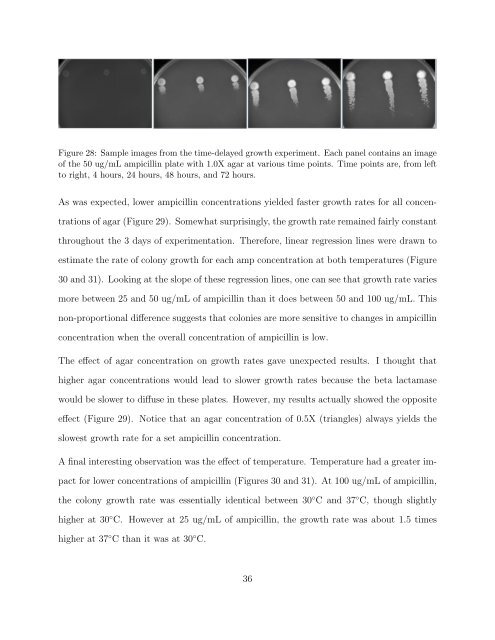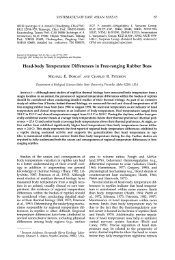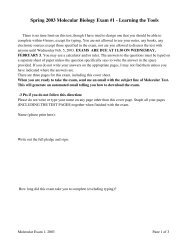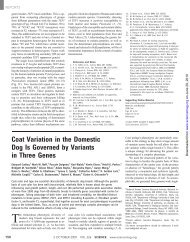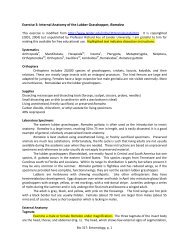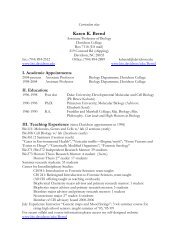Davidson College Department of Biology Honors Thesis Title ...
Davidson College Department of Biology Honors Thesis Title ...
Davidson College Department of Biology Honors Thesis Title ...
Create successful ePaper yourself
Turn your PDF publications into a flip-book with our unique Google optimized e-Paper software.
Figure 28: Sample images from the time-delayed growth experiment. Each panel contains an image<br />
<strong>of</strong> the 50 ug/mL ampicillin plate with 1.0X agar at various time points. Time points are, from left<br />
to right, 4 hours, 24 hours, 48 hours, and 72 hours.<br />
As was expected, lower ampicillin concentrations yielded faster growth rates for all concen-<br />
trations <strong>of</strong> agar (Figure 29). Somewhat surprisingly, the growth rate remained fairly constant<br />
throughout the 3 days <strong>of</strong> experimentation. Therefore, linear regression lines were drawn to<br />
estimate the rate <strong>of</strong> colony growth for each amp concentration at both temperatures (Figure<br />
30 and 31). Looking at the slope <strong>of</strong> these regression lines, one can see that growth rate varies<br />
more between 25 and 50 ug/mL <strong>of</strong> ampicillin than it does between 50 and 100 ug/mL. This<br />
non-proportional difference suggests that colonies are more sensitive to changes in ampicillin<br />
concentration when the overall concentration <strong>of</strong> ampicillin is low.<br />
The effect <strong>of</strong> agar concentration on growth rates gave unexpected results. I thought that<br />
higher agar concentrations would lead to slower growth rates because the beta lactamase<br />
would be slower to diffuse in these plates. However, my results actually showed the opposite<br />
effect (Figure 29). Notice that an agar concentration <strong>of</strong> 0.5X (triangles) always yields the<br />
slowest growth rate for a set ampicillin concentration.<br />
A final interesting observation was the effect <strong>of</strong> temperature. Temperature had a greater im-<br />
pact for lower concentrations <strong>of</strong> ampicillin (Figures 30 and 31). At 100 ug/mL <strong>of</strong> ampicillin,<br />
the colony growth rate was essentially identical between 30 ◦ C and 37 ◦ C, though slightly<br />
higher at 30 ◦ C. However at 25 ug/mL <strong>of</strong> ampicillin, the growth rate was about 1.5 times<br />
higher at 37 ◦ C than it was at 30 ◦ C.<br />
36


